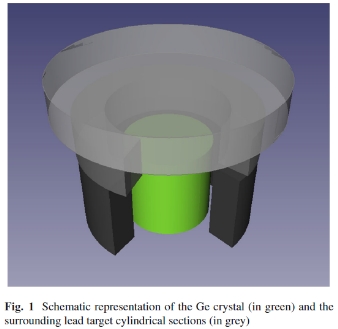PEP sheds unexpected light on Quantum Gravity
A broad class of effective theories of Quantum Gravity foresee that PEP should be violated at the non-commutativity scale of the space-time operators [1-3]. In such models the PEP violation is suppressed with E\Lambda^n, where n depends on the specific model, E is the energy of the PEP violating transition, Lambda is the scale of the space-time non-commutativity emergence. High precision low background atomic tests of the PEP violation can be the most stringent probes of Quantum Gravity; Lambda can be tested with a sensitivity which is orders of magnitude higher than the energy scale reached at the Large Hadron Collider. Since in these theories the deformation of the spin-statistics relation is due to a new structure of the space-time symmetry algebra, the MG superselection rule is violated, and the corresponding PEP violation can be tested with closed systems.
The VIP collaboration performed an experiment [4] based on a high purity coaxial p-type germanium detector (HPGe). The target material is composed of three cylindrical sections of extreme radio-purity Roman lead, which completely surround the detector. The aim of the measurement is to search for the X-rays signature of PEP-violating Kalpha and Kbeta transitions in Pb, when the 1s level is already occupied by two electrons.
An innovative data analysis is under finalization, which for the first time accounts for the energy dependence of the PEP violation probability. From the analysis of two sets of data, collected with the Roman lead target and HPGe detectors, we aim to obtained the most stringent constraints on Lambda for a wide set of models.

References
- [1]. Addazi, A.; Marcianò, A., A modern guide to theta-Poincaré, Int.J.Mod.Phys.A 35 (2020) 32, 2042003, arXiv:1811.06425.
- [2]. Arzano, M.; Kowalski-Glikman, J. Deformed discrete symmetries. Phys. Lett. B 2016, 760, 69–73
- [3]. Balachandran, A.P.; Govindarajan, T.R.; Mangano, G.; Pinzul, A.; Qureshi, B.A.; Vaidya, S. Statistics and UV-IR mixing with twisted Poincaré invariance. Phys. Rev. D, 2007, 75, 045009.
- [4]. K.Piscicchia et al., Eur. Phys. J. C (2020) 80: 508

